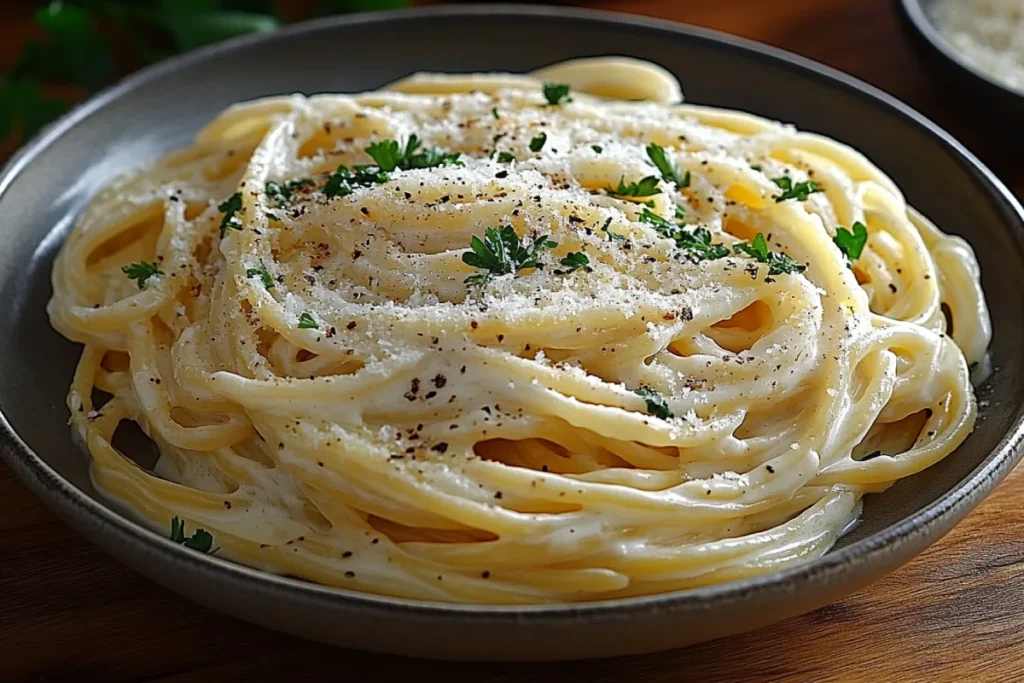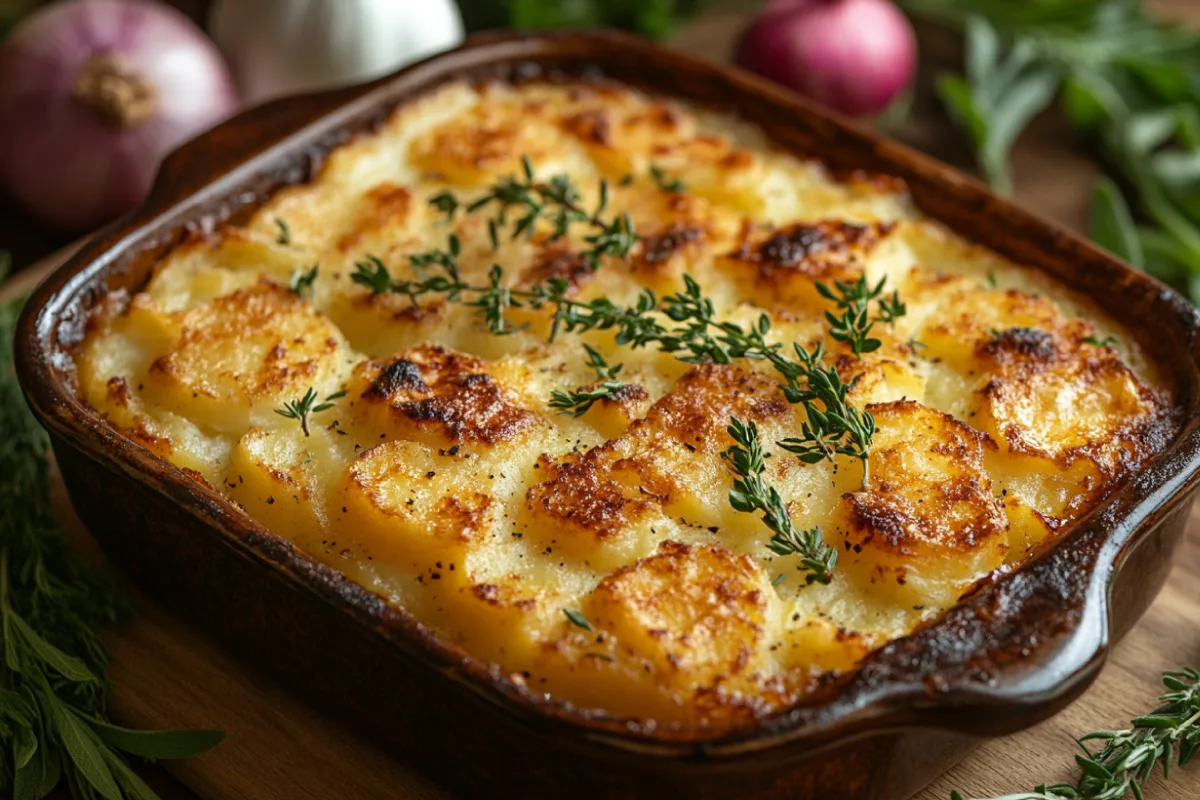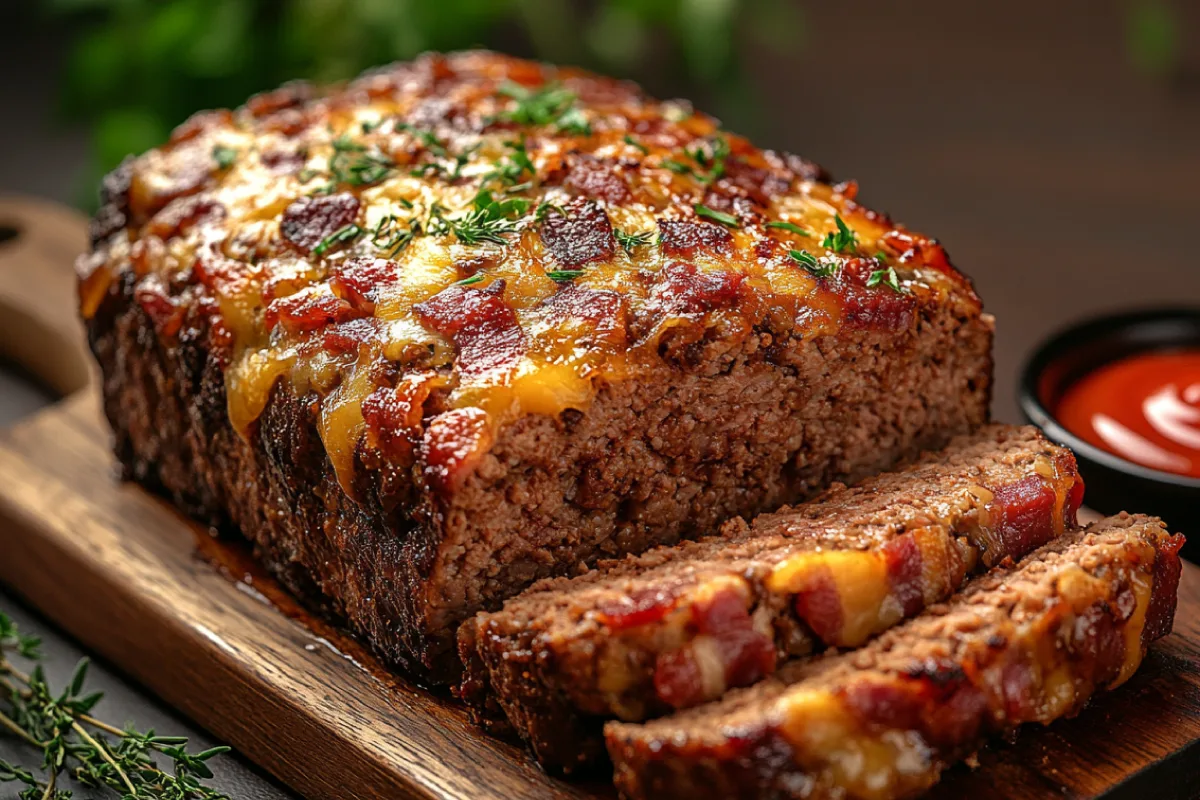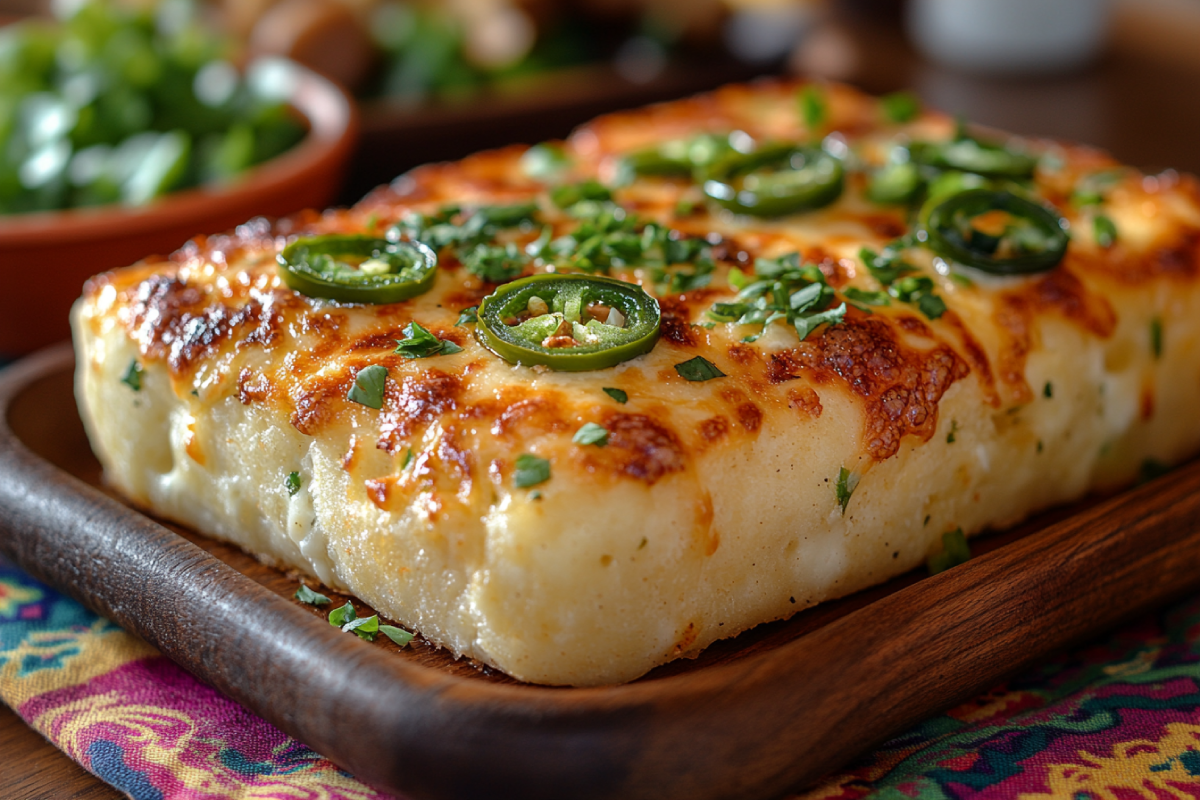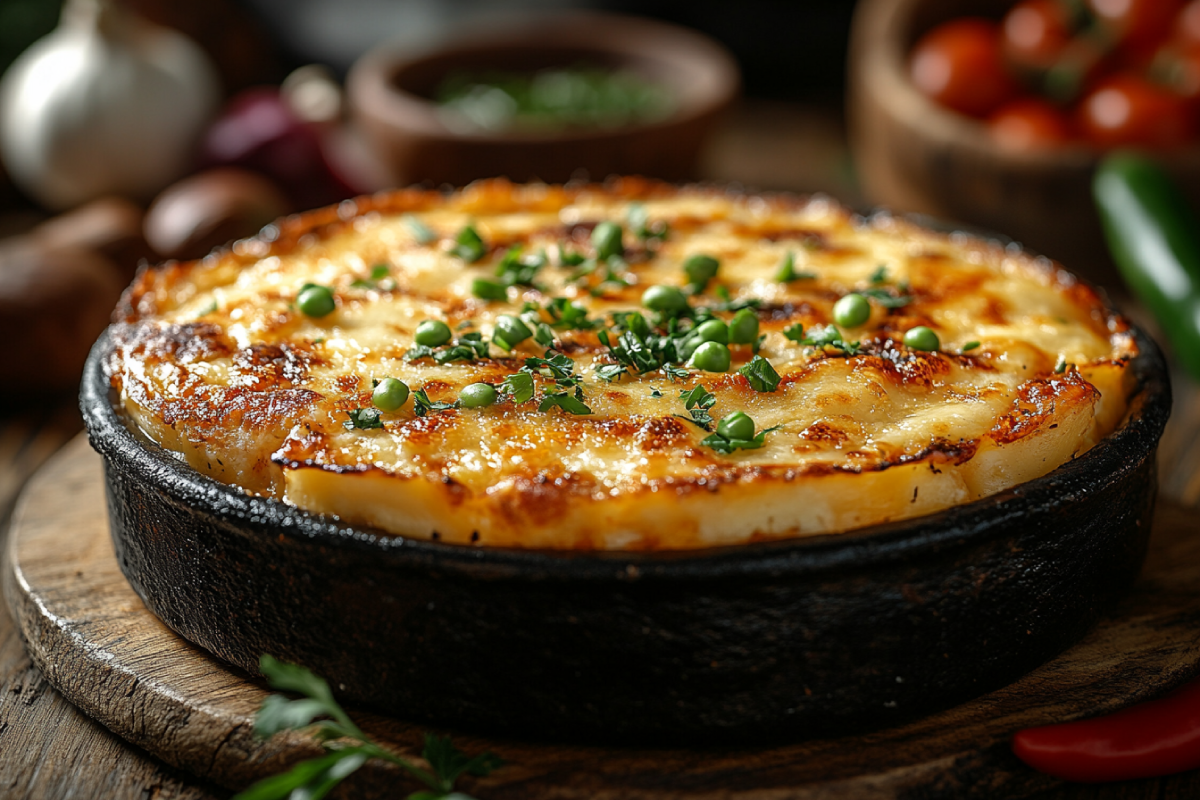Alfredo spaghetti is a beloved pasta dish known for its creamy, rich, and indulgent flavor. But have you ever wondered, what is Alfredo spaghetti called in different parts of the world or in culinary terms? This dish, often associated with Italian cuisine, has a fascinating history and has evolved into various forms over the years. Whether you call it “Fettuccine Alfredo” or simply “Alfredo pasta,” this dish has become a staple in many households and restaurants worldwide.
In this article, we’ll dive deep into the origins, names, and variations of Alfredo spaghetti. From its traditional roots to modern twists, we’ll explore everything you need to know about this iconic dish. So, if you’ve ever been curious about the proper name for Alfredo spaghetti or how to make it at home, keep reading as we unravel the story behind this creamy delight in Alfredo Spaghetti Name Explained.
The Origins of Alfredo Spaghetti
The story of Alfredo spaghetti begins in Rome, Italy, in the early 20th century. The dish was created by a man named Alfredo di Lelio, who owned a restaurant called “Alfredo alla Scrofa.” Legend has it that Alfredo invented the dish to help his pregnant wife, who had lost her appetite. He wanted to create something simple yet comforting, and thus, the original version of Alfredo spaghetti was born.
The original recipe was incredibly simple, consisting of just three ingredients: fettuccine pasta, butter, and Parmigiano-Reggiano cheese. Alfredo would toss the freshly cooked pasta with generous amounts of butter and cheese, creating a creamy, velvety sauce that clung to the noodles. The dish quickly gained popularity among locals and tourists alike, earning a reputation for its rich flavor and luxurious texture.
Interestingly, Alfredo spaghetti gained international fame when Hollywood stars Mary Pickford and Douglas Fairbanks visited Alfredo’s restaurant during their honeymoon in the 1920s. They were so enamored with the dish that they brought the recipe back to the United States, where it became a sensation. Over time, the dish evolved, with cream and other ingredients being added to the sauce, but its roots remain firmly planted in Alfredo di Lelio’s original creation.
For those wondering whether you can swap out the traditional fettuccine for spaghetti, check out this guide on using spaghetti for Fettuccine Alfredo.
What is Alfredo Spaghetti Called?
If you’ve ever wondered, what is Alfredo spaghetti called?, the answer lies in its Italian roots. The dish is most commonly known as Fettuccine Alfredo in Italy and around the world. The name “Fettuccine” refers to the type of pasta used—flat, thick noodles that are perfect for holding onto the creamy sauce. “Alfredo” pays homage to its creator, Alfredo di Lelio, who first introduced the dish in his Roman restaurant.
In American and international cuisine, it’s frequently labeled as “Alfredo pasta” or simply “creamy fettuccine”. Some versions mix Alfredo sauce with other types of pasta, which you can explore in this article about Alfredo and spaghetti sauce pairing.
The confusion around the name often stems from the dish’s evolution as it traveled across the globe. In the United States, for example, the addition of cream to the sauce led to the creation of a richer, heavier version of the dish, which is still called Fettuccine Alfredo. Regardless of what it’s called, the essence of the dish remains the same: a comforting, creamy pasta that’s loved by many.
This section of Alfredo Spaghetti Name Explained highlights how cultural adaptations and regional preferences have influenced the naming of this iconic dish.
Traditional vs. Modern Alfredo Spaghetti
The Alfredo spaghetti we know today has come a long way from its humble beginnings. While the traditional version sticks to the basics—fettuccine, butter, and Parmigiano-Reggiano cheese—modern interpretations have added their own twists, making the dish more versatile and accessible.
Traditional Alfredo Spaghetti
The original recipe, created by Alfredo di Lelio, is a testament to simplicity. It relies on high-quality ingredients to create a luxurious dish. The key to the traditional version is the technique: the pasta is tossed with butter and freshly grated Parmigiano-Reggiano cheese until the sauce becomes creamy and emulsified. No cream is used, as the richness comes solely from the butter and cheese. This version is lighter and allows the flavors of the ingredients to shine.
Modern Alfredo Spaghetti
In contrast, modern Alfredo spaghetti often includes heavy cream, garlic, and sometimes even flour to thicken the sauce. This version is richer and more indulgent, catering to those who prefer a thicker, creamier texture. Additionally, modern recipes frequently incorporate proteins like chicken, shrimp, or bacon, as well as vegetables like broccoli or mushrooms, to make the dish more substantial.
Another notable difference is the use of different types of pasta. While fettuccine remains the classic choice, modern versions sometimes use penne, linguine, or even spaghetti. These adaptations make the dish more accessible to those who may not have fettuccine on hand.
Both traditional and modern versions have their merits. The traditional recipe offers a taste of history and authenticity, while the modern version provides flexibility and variety. Whether you prefer the simplicity of the original or the creativity of contemporary takes, Alfredo spaghetti remains a beloved dish for pasta lovers everywhere.
If you’re curious about making Alfredo sauce at home, check out this Alfredo spaghetti recipe for a step-by-step guide.
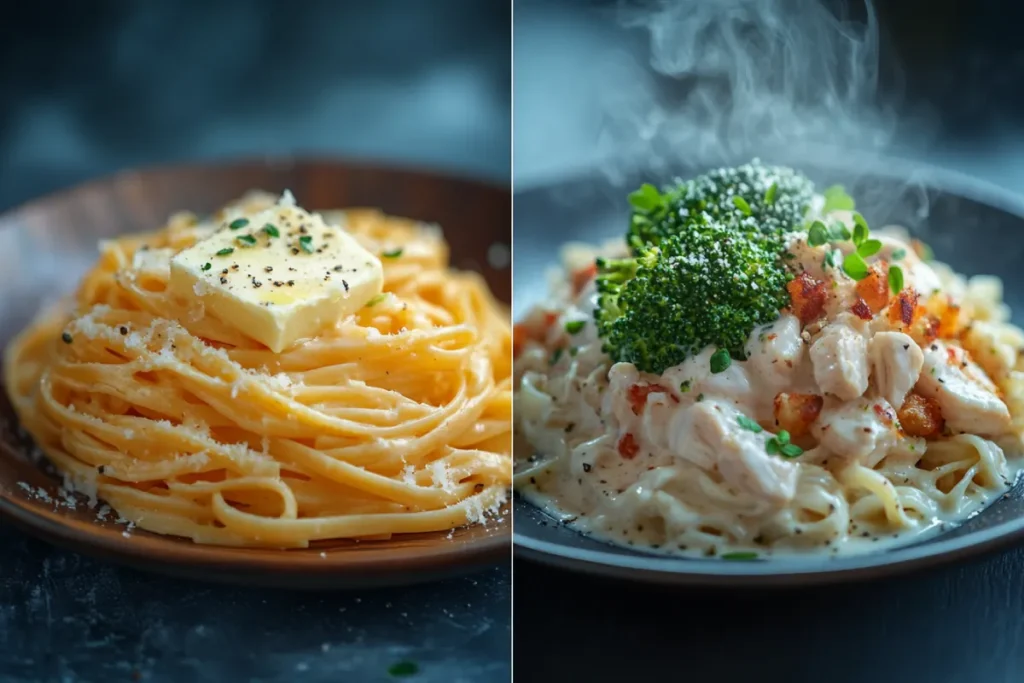
Key Ingredients in Alfredo Spaghetti
The magic of Alfredo spaghetti lies in its ingredients. Whether you’re making the traditional version or a modern twist, the quality of the components can make or break the dish. Here’s a breakdown of the key ingredients that define this creamy pasta:
1. Pasta
The classic choice for Alfredo spaghetti is fettuccine, a flat, thick noodle that holds the sauce beautifully. However, other pasta types like linguine, tagliatelle, or even spaghetti can be used depending on personal preference.
2. Butter
Butter is the foundation of the sauce, providing richness and a velvety texture. For the best results, use unsalted butter to control the saltiness of the dish.
3. Parmigiano-Reggiano Cheese
This high-quality Italian cheese is essential for authentic Alfredo spaghetti. Its nutty, salty flavor and ability to melt smoothly into the sauce make it irreplaceable. Avoid pre-grated cheese, as it often contains anti-caking agents that can affect the sauce’s texture.
4. Heavy Cream (Modern Versions)
While not part of the original recipe, heavy cream is a common addition in modern Alfredo spaghetti. It creates a thicker, richer sauce that many people love.
5. Garlic
Garlic adds a subtle depth of flavor to the dish. It’s often sautéed in butter before adding the cream and cheese.
6. Salt and Pepper
Seasoning is crucial to enhance the flavors of the dish. Freshly ground black pepper adds a slight kick, while salt balances the richness of the butter and cheese.
7. Optional Add-Ins
Modern recipes often include proteins like chicken, shrimp, or bacon, as well as vegetables like broccoli, peas, or mushrooms. These additions make the dish more filling and versatile.
Using fresh, high-quality ingredients is the secret to making exceptional Alfredo spaghetti. Whether you stick to the traditional recipe or experiment with modern variations, these components are the heart of the dish.
How to Make Authentic Alfredo Spaghetti
Making authentic Alfredo spaghetti is easier than you might think. The key is to use high-quality ingredients and follow the traditional technique. Here’s a step-by-step guide to creating this creamy masterpiece at home:
Ingredients
- 12 oz (340g) fettuccine pasta
- 1 cup (225g) unsalted butter
- 1 ½ cups (150g) freshly grated Parmigiano-Reggiano cheese
- Salt and freshly ground black pepper, to taste
- Optional: Fresh parsley for garnish
Instructions
- Cook the Pasta: Bring a large pot of salted water to a boil. Add the fettuccine and cook according to the package instructions until al dente. Reserve about 1 cup of pasta water before draining.
- Melt the Butter: While the pasta is cooking, melt the butter in a large skillet over medium heat. Be careful not to let it brown.
- Combine Pasta and Butter: Add the cooked fettuccine to the skillet with the melted butter. Toss the pasta gently to coat it evenly.
- Add the Cheese: Gradually add the freshly grated Parmigiano-Reggiano cheese to the pasta, tossing continuously. The heat from the pasta and butter will melt the cheese, creating a creamy sauce. If the sauce seems too thick, add a splash of the reserved pasta water to loosen it.
- Season and Serve: Season the dish with salt and freshly ground black pepper to taste. Garnish with fresh parsley if desired, and serve immediately.
Tips for Success
- Use freshly grated Parmigiano-Reggiano for the best flavor and texture.
- Toss the pasta continuously while adding the cheese to ensure a smooth, creamy sauce.
- Serve the dish immediately, as the sauce can thicken as it cools.
This authentic recipe stays true to Alfredo di Lelio’s original creation, offering a simple yet luxurious dining experience.
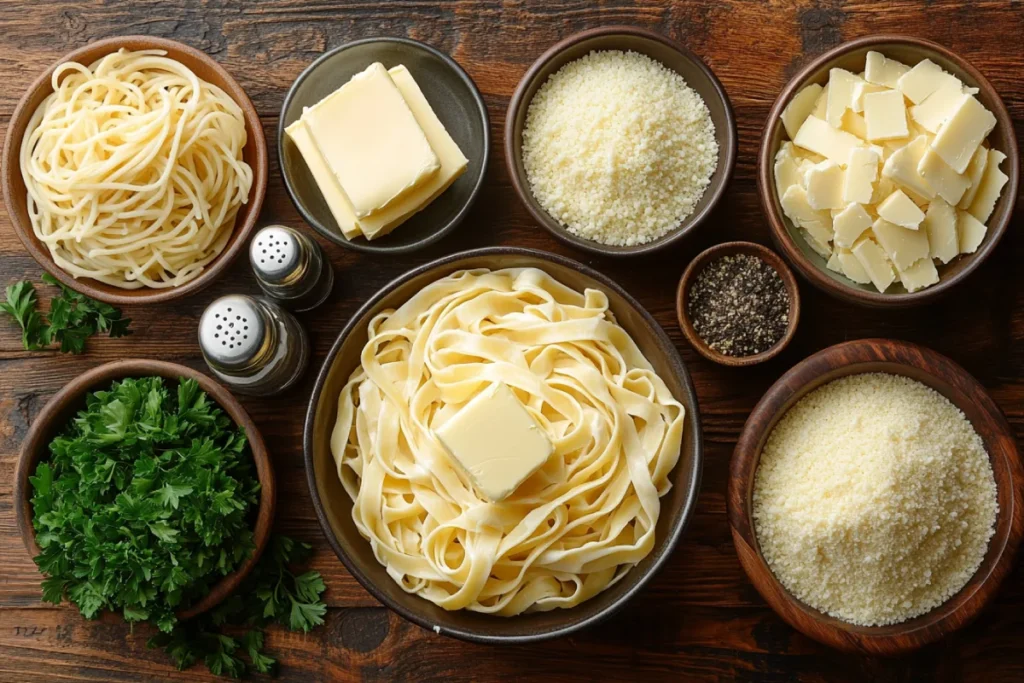
Popular Variations of Alfredo Spaghetti
While the traditional Alfredo spaghetti recipe is a classic, many variations have emerged over the years to cater to different tastes and dietary preferences. Here are some of the most popular twists on this beloved dish:
1. Chicken Alfredo
Chicken Alfredo is one of the most popular variations. Grilled or sautéed chicken breast is added to the dish, making it more filling and protein-packed. It’s a favorite in many households and restaurants.
2. Shrimp Alfredo
For seafood lovers, shrimp Alfredo is a delicious option. Succulent shrimp are sautéed in garlic butter and then tossed with the creamy Alfredo sauce and pasta. It’s a luxurious twist that’s perfect for special occasions.
3. Vegetarian Alfredo
Vegetarian versions of Alfredo spaghetti often include roasted or sautéed vegetables like broccoli, spinach, mushrooms, or sun-dried tomatoes. These additions add color, texture, and nutrients to the dish.
4. Gluten-Free Alfredo
For those with gluten sensitivities, gluten-free pasta can be used instead of traditional fettuccine. Many brands offer gluten-free options that work well with the creamy sauce.
5. Vegan Alfredo
Vegan Alfredo spaghetti replaces butter and cheese with plant-based alternatives like cashew cream, nutritional yeast, and vegan butter. It’s a great option for those following a vegan lifestyle.
6. Spicy Alfredo
For a kick of heat, some recipes add red pepper flakes, chili oil, or hot sauce to the Alfredo sauce. This variation is perfect for those who enjoy a bit of spice in their meals.
7. Baked Alfredo
Baked Alfredo spaghetti takes the dish to the next level by topping it with breadcrumbs and extra cheese, then baking it until golden and bubbly. It’s a comforting casserole-style version that’s perfect for family dinners.
These variations showcase the versatility of Alfredo spaghetti, proving that it can be adapted to suit almost any taste or dietary need. Whether you stick to the classic recipe or try one of these creative twists, there’s an Alfredo spaghetti variation for everyone.
Why Alfredo Spaghetti Remains a Favorite
Alfredo spaghetti has stood the test of time for good reason. Its creamy, comforting texture and rich flavor make it a go-to dish for both weeknight dinners and special occasions. One of the reasons for its enduring popularity is its simplicity. With just a handful of ingredients, it’s easy to prepare yet feels indulgent and satisfying.
Another factor is its versatility. Whether you’re a fan of the classic recipe or prefer modern twists like adding chicken, shrimp, or vegetables, Alfredo spaghetti can be customized to suit any palate. It’s also a dish that transcends cultural boundaries, loved by people around the world despite its Italian origins.
For busy home cooks, Alfredo spaghetti is a lifesaver. It comes together quickly, making it perfect for those nights when you need a delicious meal without spending hours in the kitchen. Plus, it’s a crowd-pleaser—kids and adults alike can’t resist its creamy goodness.
Finally, Alfredo spaghetti has a nostalgic quality for many. It’s often associated with family dinners, celebrations, and cozy nights in. Whether you grew up eating it or discovered it later in life, it’s a dish that feels like home.
Janet Sharp’s Perspective on Alfredo Spaghetti
Alfredo spaghetti is a dish that embodies simplicity and indulgence. What I love most about it is how versatile it is—whether you stick to the traditional recipe or experiment with modern twists, it always delivers comfort and flavor. My advice? Don’t be afraid to make it your own. Add your favorite proteins, vegetables, or even a dash of spice to create a version that speaks to your taste buds.
One thing I always emphasize is the importance of using high-quality ingredients. Freshly grated Parmigiano-Reggiano and good butter can elevate the dish from good to extraordinary. And remember, the key to a perfect Alfredo sauce is patience—toss the pasta gently and let the cheese melt slowly to create that creamy, velvety texture.
At the end of the day, Alfredo spaghetti is more than just a meal; it’s a celebration of simplicity and creativity in the kitchen.
FAQs About Alfredo Spaghetti
1. What is Alfredo spaghetti called in Italy?
In Italy, Alfredo spaghetti is most commonly known as Fettuccine Alfredo or pasta al burro e parmigiano (pasta with butter and Parmesan). The dish is named after its creator, Alfredo di Lelio.
2. Can I use other types of pasta for Alfredo spaghetti?
Yes! While fettuccine is the traditional choice, you can use other pasta types like linguine, tagliatelle, or even penne. The key is to use a pasta shape that holds the creamy sauce well.
3. Is Alfredo spaghetti the same as Fettuccine Alfredo?
Yes, Alfredo spaghetti and Fettuccine Alfredo refer to the same dish. The name may vary depending on the region or personal preference, but the core ingredients and preparation remain the same.
4. Can I make Alfredo spaghetti without cream?
Absolutely! The original recipe doesn’t include cream. Instead, it relies on butter and Parmigiano-Reggiano cheese to create a creamy sauce. If you prefer a lighter version, skip the cream and stick to the traditional method.
5. How do I store leftover Alfredo spaghetti?
Store leftovers in an airtight container in the refrigerator for up to 3 days. Reheat gently on the stovetop, adding a splash of milk or pasta water to restore the sauce’s creaminess.
6. Can I freeze Alfredo spaghetti?
While you can freeze it, the sauce may separate when thawed due to the dairy content. For best results, freeze the pasta and sauce separately, then combine and reheat when ready to serve.
7. What can I add to Alfredo spaghetti to make it more flavorful?
You can add garlic, herbs like parsley or basil, proteins like chicken or shrimp, or vegetables like broccoli or mushrooms. Spices like red pepper flakes or black pepper can also enhance the flavor.
8. Is Alfredo spaghetti gluten-free?
Traditional Alfredo spaghetti is not gluten-free because it uses wheat-based pasta. However, you can make it gluten-free by using gluten-free pasta and ensuring all other ingredients are gluten-free.
9. Can I make Alfredo spaghetti vegan?
Yes! Use plant-based butter, vegan cheese, and a creamy alternative like cashew cream or coconut milk to create a vegan version of Alfredo spaghetti.
10. Why is my Alfredo sauce grainy?
Grainy sauce can result from using pre-grated cheese or adding the cheese too quickly. Always use freshly grated Parmigiano-Reggiano and add it gradually while tossing the pasta continuously.
Conclusion
Whether you call it Fettuccine Alfredo, Alfredo pasta, or creamy fettuccine, this beloved dish has secured its place in kitchens and restaurants worldwide. While its Italian origins remain pure and simple, the modern versions provide endless opportunities for creativity.
For more ways to enhance the flavors of Alfredo spaghetti and other pasta dishes, check out these tips for enhancing spaghetti flavor: Enhancing Spaghetti Flavor.

